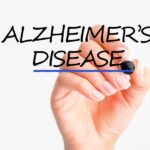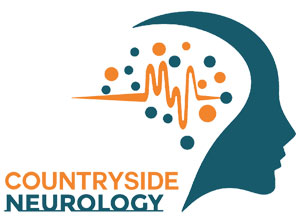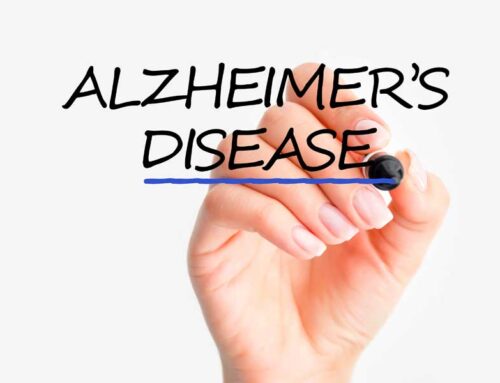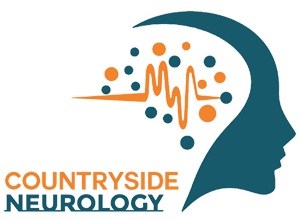 Doctors usually rely on observation and ruling out other factors to diagnose Alzheimer’s.
Doctors usually rely on observation and ruling out other factors to diagnose Alzheimer’s.
En español | The terms “dementia” and “Alzheimer’s” have been around for more than a century, which means people have likely been mixing them up for that long, too. But knowing the difference is important. In the simplest terms, one is broader than the other. If the two were nesting dolls, Alzheimer’s would fit inside dementia, but not the other way around. While Alzheimer’s disease is the most common form of dementia (accounting for an estimated 60 to 80 percent of cases), there are several other types. The second most common form, vascular dementia, has a very different cause — namely, high blood pressure. Other types of dementia include alcohol-related dementia, Parkinson’s dementia and frontotemporal dementia; each has different causes as well. In addition, certain medical conditions can cause serious memory problems that resemble dementia.
A correct diagnosis means the right medicines, remedies and support. For example, knowing that you have Alzheimer’s instead of another type of dementia might lead to a prescription for a cognition-enhancing drug instead of an antidepressant. Finally, you may be eligible to participate in a clinical trial for Alzheimer’s if you’ve been specifically diagnosed with the disease.
What it is
Dementia
In the simplest terms, dementia is a decline in mental function that is usually irreversible. It’s a syndrome, not a disease, notes neurologist Ron Petersen, director of the Mayo Clinic Alzheimer’s Disease Research Center and the Mayo Clinic Study of Aging in Rochester, Minnesota.
The catchall phrase encompasses several disorders that cause chronic memory loss, personality changes or impaired reasoning, Alzheimer’s disease being just one of them, says Dan G. Blazer, a psychiatrist and professor at Duke University Medical Center.
To be called dementia, the disorder must be severe enough to interfere with your daily life, says psychiatrist Constantine George Lyketsos, director of the Johns Hopkins Memory and Alzheimer’s Treatment Center in Baltimore.
What it’s not? Typical forgetfulness caused by aging — say, having trouble remembering the name of an acquaintance who comes up to you on the street. In fact, the earliest stage of dementia, known as mild cognitive impairment, is considered “forgetfulness beyond what is expected from aging,” Petersen says. With mild cognitive impairment, a person is still functioning normally — paying her bills, driving well enough, doing his taxes — though performing some of those tasks may take longer than they used to. When someone starts to need regular assistance to do such daily activities, “that gets into the dementia range,” Petersen says.
Alzheimer’s
Alzheimer’s is a specific brain disease that progressively and irreversibly destroys memory and thinking skills. Age is the biggest risk factor for the disease. Eventually, Alzheimer’s disease takes away the ability to carry out even the simplest tasks.
To help determine whether patients have this particular brain disease, doctors talk to the patients and their close family members about any recent challenges or changes in behavior or memory. They also administer a mental status exam in an office setting, and possibly do a short neuro-psych evaluation.
A cure for Alzheimer’s remains elusive, although researchers have identified biological evidence of the disease: neuron-destroying plaques and tangles in the brain. You can see them microscopically in brain tissue or, more recently, on PET scans that employ a tracer that binds to the proteins they are made of, making them visible. You can also detect the presence of such plaques and tangles in spinal fluid, but that method isn’t used often in the United States.
How it’s diagnosed
Dementia
A doctor must find that you have two cognitive or behavioral areas in decline to diagnose dementia. These areas are disorientation, disorganization, language impairment, mood change, personality change and memory loss. To make an evaluation, a doctor (often a specialist such as a psychiatrist, neurologist or geriatric medicine physician) typically takes a patient history and administers several mental-skill challenges.
Thanks to growing medical consensus that irritability, depression and anxiety often flag dementia before memory issues do (and official changes to the diagnostic criteria to reflect this), doctors also ask more about changes in mood or personality, Lyketsos notes.
To check for cognitive decline, a doctor will ask whether a patient is experiencing just forgetfulness or, potentially more indicative of dementia, also having trouble figuring out calculations such as a restaurant tip, Petersen says. A physical exam can be important for flagging something like specific types of dementia caused by vascular disease (strokes) or Parkinson’s disease.
Next, a standard and fairly brief round of memory and thinking tests is given in the same office visit. In the Hopkins Verbal Learning Test, for example, you try to memorize and then recall a list of 12 words — and a few similar words may be thrown in to challenge you. Another test — also used to evaluate driving skills — has you draw lines to connect a series of numbers and letters in a complicated sequence.
Alzheimer’s
For decades, diagnosing Alzheimer’s disease has been a process of elimination based on looking at a person’s symptoms and mental-test scores, then ruling out other types of dementia, such as Parkinson’s dementia or vascular dementia.
With Alzheimer’s in particular, the progression and timing of symptoms is also important. To identify this degenerative brain disease, doctors are looking for “a gradual, insidious onset that is slowly getting worse,” Petersen says.
Until fairly recently, a conclusive diagnosis was not possible until an autopsy was performed and the brain examined for the physical hallmarks of the disease — beta-amyloid and tau, proteins that look like plaques and tangles in the brain.
Now, a patient can immediately request a PET scan or cerebrospinal fluid sampling that can show, with 95 percent accuracy, whether such plaques or tangles are present. But a high percentage of patients never get such a test, doctors say. PET scans aren’t normally covered by insurance, and treatments based on specifics such as whether you have more amyloid plaques or more tau tangles in your brain aren’t yet available.
What’s more, doctors say they are often confident, based on evidence such as memory tests, a patient’s age and the progression of symptoms, that a patient suffers from Alzheimer’s in particular. Having a PET scan done also doesn’t change the available treatment, which so far consists of only a handful of drugs used to briefly control symptoms of the disease. Without conclusive imaging, doctors will still act on what they call the strong assumption someone has “probable” Alzheimer’s.
Sourses:Aarp.org
https://www.aarp.org/health/dementia/info-2018/difference-between-dementia-alzheimers.html?CMP=KNC-DSO-COR-DementiaAlzheimers-19445-Bing-HEALTH-Dementia-Dementia-Dementiavs.Alzheimers-Exact-NonBrand&&msclkid=9ab3c0d456ea14853b5aa3f3cf09f1aa&utm_source=bing&utm_medium=cpc&utm_campaign=Health-DementiaAlzheimers-NonBrand-Exact&utm_term=what%20is%20alzheimers&utm_content=Dementia-Dementiavs.Alzheimers&gclid=9ab3c0d456ea14853b5aa3f3cf09f1aa&gclsrc=3p.ds





